Metcalfe's law
description: empirical rule that that the value of a telecommunications network is proportional to the square of its number of users
11 results

Getting Real
by
Jason Fried
,
David Heinemeier Hansson
,
Matthew Linderman
and
37 Signals
Published 1 Jan 2006
If you can't build your version one with three people, then you either need different people or need to slim down your initial version. Remember, it's ok to keep your first version small and tight. You'll quickly get to see if your idea has wings and, if it does, you'll have a clean, simple base to build on. Metcalfe's Law and project teams Keep the team as small as possible. Metcalfe's Law, that "the value of a communication system grows at approximately the square of the number of users of the system," has a corollary when it comes to project teams: The efficiency of the team is approximately the inverse of the square of the number of members in the team.

Content: Selected Essays on Technology, Creativity, Copyright, and the Future of the Future
by
Cory Doctorow
Published 15 Sep 2008
But I think that this is far from a sure thing. Sure, networks generally follow Metcalfe's Law: "the value of a telecommunications network is proportional to the square of the number of users of the system." This law is best understood through the analogy of the fax machine: a world with one fax machine has no use for faxes, but every time you add a fax, you square the number of possible send/receive combinations (Alice can fax Bob or Carol or Don; Bob can fax Alice, Carol and Don; Carol can fax Alice, Bob and Don, etc). But Metcalfe's law presumes that creating more communications pathways increases the value of the system, and that's not always true (see Brook's Law: "Adding manpower to a late softer project makes it later").
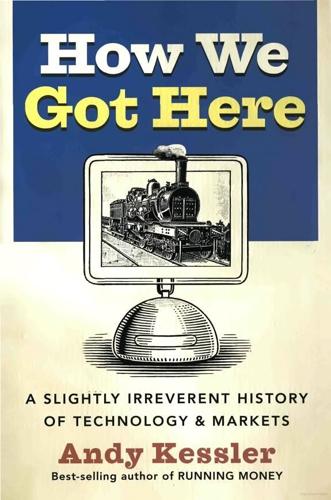
How We Got Here: A Slightly Irreverent History of Technology and Markets
by
Andy Kessler
Published 13 Jun 2005
The talk was dull, but as a slide demonstrating uses of 10 gigabit and soon 100 gigabit Ethernet networks flashed on the screen, I noticed a funny look on Bob Metcalfe’s face: He was half stunned, half amused that Ethernet is still scaling from those 2.94 megabit per second beginnings. 150 HOW WE GOT HERE Metcalfe is also known for another famous observation – that the value of a network goes up by the square of the number of nodes attached to it. The official definition of Metcalfe's Law is: The value of a network grows as the square of the number of its users. Actually, for those keeping track at home, it’s n*(n-1). A single node has no connections, two nodes have 2 connections, one in either direction, three nodes have 6, etc. This becomes the scale of the Web when millions of nodes are connected, and Metcalfe’s Law is what made Napster and peer-to-peer file sharing such a huge phenomenon. Bob told me, “Unlike Moore's Law, Metcalfe's Law has never been actually numerically true. It's a vision thing. You can quote me.” *** Local area networks, LANs, became extremely popular in hooking up mainframes and minicomputers.
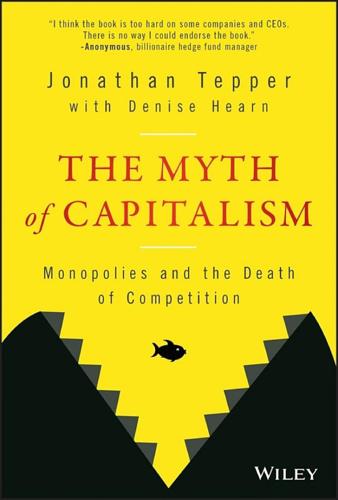
The Myth of Capitalism: Monopolies and the Death of Competition
by
Jonathan Tepper
Published 20 Nov 2018
PayPal doesn't work well if only a few people use it, but if everyone accepts it, you can pay for almost anything with it. The more people that use eBay, PayPal, Skype, Twitter, or Facebook, the less likely it is that they will face competitors. Various mathematicians have come up with mathematical formulas to ascribe value to networks: Sarnoff's Law, Metcalfe's Law, and Reed's Law. They all show that the value of networks is a function number of users. The rule for analyzing networks is that with each additional person in the network, the number of potential connections in a network grows exponentially. The value isn't arithmetic (3 + 3 = 6), it is much more exponential (3 × 3 = 9).
…
., 179 McNamee, Rogert, 113 Measure of America report, 114 Meat industry, oligopolies, 132–133 Meat processing firms, ownership timeline (changes), 134f Media, oligopolies, 133, 135 Medical care, oligopolies, 129 Mega merger waves, 163f Mellon, Carnegie, 139 Mergers changes, 9f enforcement, death, 163 impact, 43–44 mega waves, 163f merger-induced price increases, evidence, 42 prices, increase, 44 rejection, standard/basis, 243 reversal, 243 solutions/remedies, 242–245 studies, 60 waves, 145f, 154 Mergers and acquisitions (M&As) impact, 12 proportion, 164f Mergers, Merger Control, and Remedies, (Kwoka), 42 Metcalfe's Law, 98 Michaely, Roni, 8, 13 Microprocessors, monopolies/local monopolies, 121 Microsoft monopoly, 93 operating system market share, 117 “Middle America,” revolt, 58 Miliband, Ed, 215 Milk, monopolies/local monopolies, 118–119 MillerCoors, creation, 123 Mill, John Stuart, 22 Minimax theory, 27 Mnuchin, Steven, 189 Moeran, Shivaun, 87–88 Mogridge, Martin, 18–19 Molson Coors beer market dominance, 188 SABMiller, duopoly, 123 Money, spending, 247 Monocultures, danger, 59 Monopolies, 15 competition, impact, 179 condemnation (Truman), 146 defining, 37–38 factors, 16 impact, 116–122 King Kong, comparison, 35 Monopolists, barrier entry, 245 Monopoly Machine, 15–16 usage, 51 Monopoly Rules, 5–6 Monopsonies, 37–38, 71 meaning, 74 power, 85 ranking, 73f Monsanto Bayer purchase, proposal, 119, 121 federal government, revolving door, 193f lobbying spending, 192 Moody's, return on invested capital (ROIC), 183 Moore, Gordon E., 66 Morganizing (Morganization), 195, 196, 209, 240 Morgan, John Pierpont, 143, 195 Buffett, comparison, 198 failing company finance, 196 inheritance, 208 Mueller, Holger M., 39 Mukherjee, Siddhartha, 167 Munger, Charlie, 2 Murdoch, Rupert, 133 “My Fellow Zillionaires” (Hanauer), 231–232 N Nakaji, Peter, 35–36 Nash, John, 26 National Dairy Holdings, price fixing, 119 Nationally Recognized Statistcal Rating Organization (NRSRO), 183–184 Navalny, Alexei, 92 Nazis, trusts (commonality), 137 NBCUniversal, Comcast purchase, 6–7 NBC Universal, market dominance, 133 Net investment (nonfinancial businesses), 205f Netscape, Microsoft (impact), 93 Net wealth shares (United States), 230f Network Effects, 15, 98 self-reinforcement, 103–104 Nevins, Allan, 156 New Deal, 78 “New Poor,” 230–231 News Corporation, market dominance, 133 News Feed (Facebook), impact, 99–100 Nixon, Richard, 157 Noesser, Gary, 28 Noncompete agreements (noncompetes) spread, 84 state enforcement, absence, 70f worker percentage, 69f Nonfinancial businesses, net investment, 205f Northern Rock, panic, 17–18 Northern Securities Company, formation, 196 Noyce, Robert, 66–67 NSC, antitrust case, 196 O Obama, Barack, 95–96, 161, 165, 190 reverse revolvers, 191–192 Occupational licensing, excess (impact), 83 Occupy Wall Street movement, 211–212 Ogden, Aaron, 137 Ohlhausen, Maureen K., 83 Old Republic, market dominance, 135 Oligopolies, 15, 125–136 Buffett perspective, 201 court decision, 30 ownership, 201 reputation, problem, 5 Olney, Richard, 191 “On Being the Right Size” (Haldane), 49 Online advertising, duopolies, 123–124 Operating systems, Microsoft market share, 117 Optimism, essence, 229 OptumRx, market dominance, 130 Ordoliberalism, 153, 238 Organisation for Economic Co-operation and Development (OECD), study, 23 Organisms, growth phases, 52f Orphan Drug Act (1983), 175 Orwell, George, 113 Ownership, concentration, 199 P Page, Larry, 68 Panic of 1907, 195–196, 208–209 Pasquale, Frank, 123 Passive investing, 201 Passive investments, contest, 203 Passively managed assets, share, 202f Patents, 171–172, 246 annual issuance (US), 173f problems, 172–173 protection, congressional removal, 246 Walt Disney, impact, 173–174 Paulson, Henry, 190 Payment systems, duopolies, 122 PayPal eBay release, 56 founding, 4 value, 118 Pearson, Michael, 168–169 Peltzman, Sam, 224 Perfect markets, belief, 155 Perkins, Charles E., 191 Personal information, Facebook control, 117 Pharmaceutical Research and Manufacturers of America, drug lobbying, 187 Pharmacy benefit managers (PBMs) market, 115–116 oligopolies, 130–131 Philippon, Thomas, 56 Phone companies, oligopolies, 126–127 Phone operating systems, duopolies, 123 Pierce, Justin, 40–41 Pike, Chris, 226 Piketty, Thomas, 214–217 diagnosis, 228 income chart, 224 Pipes, basis, 122 “Pitchforks Are Coming…for Us Plutocrats” (Hanauer), 232 Planck, Max, 165 “Planning Outline for the Construction of a Social Credit System” (China), 111–112 Platform companies, 97–98 Political activity, 248 Political freedom, 143–144, 233 Porter, Michael, 14 Posner, Richard, 156 Potsdam Treaty, 150–151 Poultry industry, oligopolies, 132–133 Power balance, 217 concentration, 141 imbalance, 74 Predatory pricing, punishment (laws), 244 Premier, market dominance, 130 Price-fixing, allegations, 131 Price leadership, 43–44 Prices, increase, 40–45 mergers, impact, 44 Prisoner's Dilemma, The, 27–28 Privacy, importance, 247–248 Productivity companies, impact, 54 growth, reduction, 53f low level, impact, 48–49 reduction, 47–56 wages, contrast, 222 Profitability increase, 51 investment, contrast, 57f Profits, lobbying/regulation (relationship), 188 ProPublica study, 104 Protestant Ethic and the Spirit of Capitalism, The, (Weber), 76 Q Queen, Edward, 14 R Raff, Adam, 87–88, 94 Railroads control, farmer resentment, 140 mergers, 120f monopolies/local monopolies, 119 Randall, James, 21 RCA, innovation, 55 Reagan, Nancy, 159 Reagan, Ronald, 46, 158–161 antitrust revolution, 224–225 Reback, Gary, 94 Reed's Law, 98 Reflections on the Revolution in France (Burke), 239 RegData, usage, 180, 188 Regulation lobbying/profits, correlation, 188 profits, correlation, 181 usage, 167, 245–246 Regulatory capture, avoidance, 245 Reich, Robert, 197 Republic Services Group, 3 Return-free filing system, IRS implementation, 126 Returns, company lobbying (comparison), 187f Reverse revolvers, 191–192 Revolt of the Elites, The, (Lasch), 58 Revolutions, appearance, 230–231 Revolving door, 190f, 193f avoidance, 245 Reynolds, Glenn, 183 Rhodes, Cecil, 24 Ricardo, David, 58 Richards, Tyler, 179 Robber barons impact, 111 term, usage, 139 Rock, Edward, 209 Rockefeller, John D., 111, 126, 139–143, 208, 240 Roosevelt, Franklin Delano, 146, 224 New Deal, 78 Roosevelt, Theodore, 141–143, 193, 234 trust fighting, 239–240 Royal Bank of Scotland, rate rigging, 25 Rural areas, lag, 72f S Salop, Steven, 39, 225 Sandberg, Sheryl, 114 Sanders, Bernie, 212, 231 Sarnoff's Law, 98 Saving Capitalism (Reich), 197 Saxenian, AnnaLee, 67 Scale (West), 51 Schäuble, Wolfgang, 17 Schiantarelli, Fabio, 181 Schmalensee, Richard, 106 Schmalz, Marin, 199 Schmidt, Eric, 68, 96, 114 Schumpeter, Joseph, 4–5 Schweitzer, Arthur, 148 Search engine, building, 118 Searches, monopolies/local monopolies, 118 Secular stagnation, 56 Seeds, monopolies/local monopolies, 119, 121 Servan-Schreiber, Jean-Jacques, 4 Service Corporation International (SCI), market dominance, 121–122 Share buybacks, 206 limitation, 247 Shareholders, 246–247 manager representation, 79 Sherman Act of 1890, 7, 140–144, 157, 160, 237 Sherman, John, 140, 195 Shockley, William, 65–67 Signaling, 30 Silicon Valley, disparagement, 87 Simon, Hermann, 29–30 Singer, Paul, 203–204 Skilling, Jeffrey, 14 SkyChefs, wage laws fines, 78 Small banks, disappearance, 181–182 Small firms, disappearance, 47 Small-scale businesses, job creation, 50 Smith, Adam, 7, 22, 35, 38, 63, 191 invisible hand, 38 Smith, Brad, 94 Smith, William French, 158 Snap, Initial Public Offerings, 107 Snowden, Edward, 112 Social networks, monopolies/local monopolies, 117–118 Society, regulations (service), 245 Soros, George, 113 Sprint, phone market dominance, 126–127 Square-cube law, 49–50 Staggers Rail Act (1980), 119 Staltz, André, 102 Standard Oil market control, 90–91 Supreme Court dissolution, 142 Standard & Poor's 500(S&P500), Big 3 ownership, 203f Startups advertising, 107 dynamics, 106–107 reduction, 45–47 Stationers Company, The, 235 Statute of Monopolies (England), 172 Steele, Helena, 102 Steinbaum, Marshall, 38, 72 Sterling Jewelers, claims (filing), 80 Stewart, market dominance, 135 Stigler, George, 155 Stiles, T.J., 138–139 Stock markets, success, 218 Stock ownership income, impact, 197 US percentage, 201 Stocks company retirement, 207 options, manager purchase, 247 Stoppelman, Jeremy, 108 Strikes, wage growth (association), 80f Strouse, Jean, 208 Structure of Scientific Revolutions, The, (Kuhn), 165 Summers, Larry, 56 Superstar firms, rise, 40 Suslow, Valerie Y., 25 Sustainable prosperity, 208 Sweetland, Kyle, 83 Swipe fees, dispute, 122 Switching costs (reduction), rules (creation), 246 T Tabakovic, Haris, 192 Taibbi, Matt, 102 Takedown notices, filing, 99 Tap Dancing to Work (Buffett), 1 Tax preparation, oligopolies, 125–126 Technology companies market capitalization, 90–91 monopolies, profits, 114 Tecu, Isabel, 199 Teles, Steven M., 174, 188 Temporary work, empowerment, 75 Temporary workers, poverty l ine, 75 Tesla, Nikola, 67, 195 TEVA Pharmaceuticals, generic drug release, 176 Thiel, Peter, 4–5 Third-party services, sale, 245 Thomas, Diana, 180 Time Warner Cable, Comcast purchase (FTC prevention), 165 Time Warner, market dominance, 133 Tit for Tat, 28–29 Title insurance, oligopolies, 135–136 T-Mobile, phone market dominance, 126–127 “Tobacco Trust,” 142 Toll roads, impact, 111 Trademarks, theft, 102 Trade, restraints, 68 “Traitorous Eight,” 66, 84 TransDigm, company acquisition/price increases, 184–186 Trickle-down monetary policies, 219 Trotsky, Leon (rehabilitation), 212 True Believer (Hoffer), 230 Truman, Harry (monopoly condemnation), 146 Trump, Donald (election), 212 Trusts antitrust enforcement budget, 160f challenges, 141 creation, 142 Nazis, commonality, 137 Turf wars, 21 U Unionization, collapse, 83 Unions decrease, 84f membership, income distribution (contrast), 79f restrengthening, 78 United States banking mergers, 128f banks, owners (ranking), 200f economy, entrepreneurialship (reduction), 46f federal government, relationship/revolving door, 190f, 193f grocery market, competitiveness, 32 healthcare, monopolies/oligopolies (prevalence), 131–132 income inequality, 214f, 225f job markets, examination, 38 markets, passively managed assets (share), 202f Morganizing, 195 net wealth shares, 230f optimism, essence, 229 patents, annual issuance, 173f public companies, collapse (number), 10f wages leading indicator, perception (variation), 64f United States v.
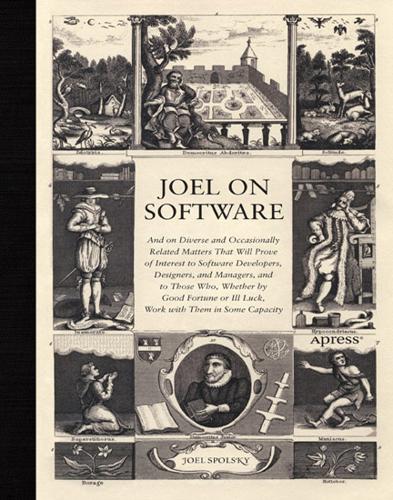
Joel on Software
by
Joel Spolsky
Published 1 Aug 2004
Another question about displacing competitors has to do with network effects and lock-in: Ben & Jerry's Amazon No network effect, weak customer lock-in Strong network effect, strong customer lock-in A network effect is a situation where the more customers you have, the more customers you will get. It's based on Metcalfe's Law:1 The value of a network is equal to the number of users squared. A good example is eBay. If you want to sell your old Patek Philippe watch, you're going to get a better price on eBay, because there are more buyers there. If you want to buy a Patek Philippe watch, you're going to look on eBay, because there are more sellers there.
…
Microsoft server failure recovery–2nd setup programs in–2nd and Transmeta listening to customers–2nd Lister, Timothy–2nd "lite" products–2nd lock-in strategies–2nd log files in bug fixing log in forms–2nd Longhorn system API changes for Microsoft investment in support for Lord Palmerston question Lotus 123 delayed release for, 2nd marketing strategies for–2nd low-memory conditions M Macintosh advertising for backward compatibility in Pascal strings in macro development in Excel–2nd macroeconomics mainframes malloc function man pages management strategies Juno–2nd Microsoft–2nd managers characteristics of–2nd for functional specifications–2nd hiring–2nd at Juno nontechnical–2nd software schedule input by–2nd manifests Manzi, Jim mapping in Unicode marketing chicken-and-egg problems–2nd product switching barriers–2nd viral–2nd marketing people blunders by as program managers master programmers–2nd maybes, interviewing–2nd McConnell, Steve McDonald's, rules at–2nd McFarlane, Jill measurements dysfunction from–2nd by Naked Chef Measuring and Managing Performance in Organizations (Austin)–2nd mechanism, separating policy from Media Lab memory for bloatware memory management automatic–2nd SimCity mentoring difficulties–2nd meta tags Metcalfe's Law methodology limitations Michelman, Eric Michelson, Amos microeconomics Micropro blunders Microserfs (Coupland) Microsoft. See also Windows bill presentment system blunders business model management strategies–2nd master programmers–2nd opposing forces inside–2nd program managers–2nd Microsoft Project–2nd Microsoft Typography group mistakes in business strategies in programming questions money, substituting for time–2nd, 3rd monopolies, transition tipping points for–2nd mood swings morale and performance reviews Mozilla program completion of cross-platform problem in delays in, 2nd as open source size of switching to MSDN Magazine Camp at Microsoft–2nd victories of–2nd MSN Auctions site multiple-person interviews multitasking–2nd Murphy's Law week frozen pipes Linux server failure–2nd web server down–2nd Murray, Mike mystrcat function myths 80/20–2nd testers–2nd Unicode–2nd N Naked Chef–2nd native facilities with Java negative performance reviews .NET backward compatibility of for cell phones cross-language strategy hype for–2nd memory management in–2nd products using runtimes in–2nd, 3rd–4th strategy for moving to–2nd as upgrade product–2nd white paper for Netscape.

Smart Mobs: The Next Social Revolution
by
Howard Rheingold
Published 24 Dec 2011
See also Native Americans Industrialization Information Tapestry InfoScope InfoWorld, Ink-jet printers Innamaa, Ilkka Innovation commons See also Commons Insect behavior Institute for Advanced Study (Princeton University) Intel and Bluetooth supercomputers Intelligence: artificial (AI) extraterrestrial humanistic (HI) swarm See also Intelligent (digital) cities Intelligent (digital) cities Interaction Lab Interaction Order International Paper Internet advent of and ARPA cable access to as an innovation commons and Metcalfe's Law, xv T1 connections to T3 connections to Internet Untethered, The (Standage) Interpersonal awareness devices INTV Inventory management systems Ioannidis, John IRC (Internet Relay Chat) Irrigation systems Ishii, Hiroshi ISPs (Internet Service Providers) It's Alive (company) Italy Ito, Mizuko I-WAY experiment Japan: keitai users in ImaHima in i-mode service in NTT in sense of privacy in, versus in America and shared forestry resources Shibuya Crossing in WISnet in Japanese language JEDI (Joint Expeditionary Digital Information) Jefferson, Thomas Jenkins, Henry Jhanji, Neeraj John Paul II (pope) John W.
…
See Apple Computer Maenpaa, Pasi McMaster University McNett, David Mad Wing Angels gang Madison, James Maes, Pattie Maguire, Gerald Mainframe computers Malda, Rob "Man-Machine Symbiosis" (Licklider) Manhattan Project Manila Mann, Steve and OCAP and WearComp use of the term cyborg by Marcos regime Marine biology . See also Biology Marx, Gary Mathematics Matshushita Matsunaga, Mari MCI M-commerce market Media spheres Medical research MeshNetworks Metalica Metatechnologies Metcalf, Bob Metcalfe's Law, xv and cooperation amplification and wireless networks Metricom Mexico Microprocessors,i and ad-hocracies clustering cycles and grid computing Intel, advent of and Moore's Law, xv and the search for extraterrestrial intelligence Microsoft and Bluetooth developer conferences and Linux museum .NET initiative and reputation systems Research and wireless networks Middle Ages Middleware Milinski, Manfred Military research: and ARPA and DARPA and frequency-hopping and GPS systems and smart dust Minitel Mira computer tablet Mirror Worlds concept MIT (Massachusetts Institute of Technology) Artificial Intelligence lab Auto-ID Center bioacoustics research Center for Bits and Atoms Digital Nations consortium Media Lab and reputation systems Sloan School of Management and wireless networks and wearable computing Mitchell, William J.
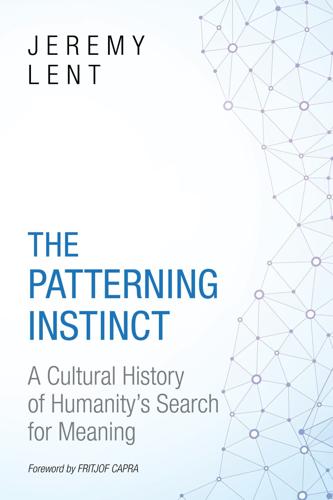
The Patterning Instinct: A Cultural History of Humanity's Search for Meaning
by
Jeremy Lent
Published 22 May 2017
This dispersed and unstructured grouping of concerned citizens constitutes, in his mind, “the largest social movement in all of human history.”85 The potential impact of this social movement is increased by the power of the internet to amplify each individual group's effectiveness through its networked connectivity. Hawken points to Metcalfe's law, which states that the usefulness of a network grows exponentially when its connections grow arithmetically. In this way, the collective actions of small groups of individuals can potentially become a global force to countervail the massive corporate networks that currently dominate global civilization.
…
.), 406–407, 408, 410–11, 429, 431–32 Lincoln, Abraham, 383 linguistics, 11, 15, 60, 197–99 Liu Hui, 208 lock-in financial, 397–98 ideological, 398 technological, 396–97 Loeb, Jacques, 284 Logos (the “Word” of God), 224, 227–28 London, England, 16, 251, 273, 430 Lorenz, Edward, 357–58, 364, 372 Louis IX, Saint, 246 Lovelock, James, 370, 419 Ludlul, 126, 127 Luther, Martin, 347 ma'at, 115, 120–21, 122, 130, 379, 480 Maathai, Wangari, 292 “Machiavellian intelligence,” 43–45, 51 Maitri Upanishad, 172 Malebranche, Nicolas, 284 Malindi, 329 Malthus, Thomas, 416–17 Mandelbrot, Benoit, 263, 364–65 Manichean sect, 232 Marduk, 219, 279 Marriage of Inanna and Dumuzi, The, 110–11 Marx, Karl, 286 mathematics Al-Ghazali's view of, 322–23 in Chinese civilization, 208, 324 in Christian Rationalism, 332, 343–44, 345–47, 522 complex systems and, 258, 263, 364–65 Descartes's view of, 235, 279 Galileo's view of, 346 in Greek civilization, 150–51, 208, 336–37 in Islamic civilization, 319 Mesopotamia, pioneered in, 128, 130, 145 Plato and, 154, 157–58 Platonism, in modern, 351–55, 524 in scientific cognition, 349–55 Mather, Cotton, 237–38 Matrix, The (film), 423 Maturana, Humberto, 368 Mauryan empire, 247 maya, 168–69, 172–73, 176–77, 188 Mayan civilization, 88, 115, 296, 411, 472 Mazur, Paul, 380 Mead, Margaret, 439 mechanistic worldview, 237 Medieval period (Middle Ages), 233, 282, 301–302, 340–42, 343–44 Meditations (Descartes), 236 Megara (Greek town), 143 Meluhha, 130 Mencius, 208, 265 Merleau-Ponty, Maurice, 264, 363 Mesopotamian civilization and thought, 107, 125–30 afterlife, view of, 126 agrarian values of, 110–11 cosmology of, 125–30, 150, 240 DIVINE LAWGIVER metaphor in, 279 environmental degradation in, 296–97, 411 geography of, 125, 130 innovations of, 128–30, 140, 412 justice, concept of, 129–30, 298 secularization in, 129 See also Epic of Gilgamesh metaphoric threshold, 65–66, 72, 203 metaphors, root agrarian worldview and, 204 Chinese worldview and, 187–88, 204 framing patterns of thought, 23, 27–30, 198, 203–204, 277–78 Greek worldview and, 204 hunter-gatherers and, 86–87, 204 Indian worldview and, 204 reality, viewed as, 23, 87, 204, 277–78, 282, 285, 369, 425–26 specific metaphors ANCESTORS, NATURAL SPIRITS AS, 111–16, 204 CONQUERING NATURE, 16, 277–78, 285–86, 290–92, 313, 373, 388, 418–19, 436, 441 DIVINE LAWGIVER, God as, 279–80, 281–82, 289 DOMINION OVER NATURE, HUMANITY'S, 279–81, 287, 289, 292, 312 GIVING PARENT, nature as, 86–87, 204, 287–88, 291–92 GUESTS OF NATURE, humans as, 288–91 HIGH IS GOOD, 204 MACHINE, NATURE AS, 281–85, 292, 368–70, 373, 418–19, 425–26, 441 ORGANISM, NATURE AS, 185, 187–88, 288–91 STEWARD OF NATURE, HUMANITY AS, 281, 287, 312, 395, 419 WEB OF MEANING, 373, 436, 441 See also patterns of meaning Metcalfe's Law, 438 Meton, 151 Mexico, 20, 116, 197, 296, 309, 399, 477, 534–35. See also Aztec civilization; Mayan civilization Micmac tribe (Nova Scotia), 91–92 Middle Ages. See Medieval period Mill, John Stuart, 286 mimetic culture, 32, 40–42, 45, 57–58, 62, 63–64 mind-cure religions, 378, 400–401 Mohenjo-daro, 130, 136 money, 381–82 Mongols, 272–73, 299, 325, 327, 330 monolatry, 216 monotheism, 215, 271 in Christian thought, 227–38 intolerance of Akhenaten and, 239 British and, 248–49 China, contrasted with, 249–50 in Christianity, 243–47 India, contrasted with, 247–49 in Islam, 246–47, 248, 321–23 in Old Testament, 241–43 polytheism contrasted with, 240–41, 243–44 in Zoroastrianism, 139–40, 241, 244 in Old Testament, 215–22 Platonism in, sources of, 215, 222–26 Montezuma, 307 Moore's law, 375–76, 401, 405, 416 morality afterlife in Egyptian civilization, relation to, 120–21 in Chinese thought, 211, 262–63 in Christianity, 248–49, 312 Confucian view of, 191–93 European imperialist view of, 311–12, 314 evolutionary theories of, 43–47, 262 expanding scope of, 432–33 Neo-Confucian view of, 262–63, 268–71, 271–72 in Old Testament, 222, 279–80 Protestant view of, 238, 312 Pythagorean view of, 150 Stoic view of, 159 transhumanism and, 421 in Western thought, 262 More, Sir Thomas, 312 Morris, Ian, 18–19 Moses, 215–16, 224 Muhammad (prophet), 318, 321, 323 Muhammad of Ghor, 248 Muntzer, Thomas, 245 Muslim people.
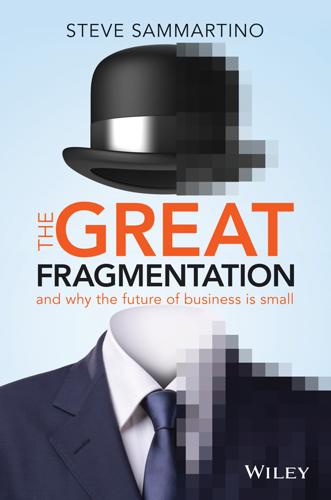
The Great Fragmentation: And Why the Future of All Business Is Small
by
Steve Sammartino
Published 25 Jun 2014
INDEX 3D printing access and accessibility see also barriers; communication; digital; social media — factors of production — knowledge adoption rates advertising see also marketing; mass media; promotion; television Airbnb Alibaba Amazon antifragility Apple artisanal production creativity audience see also crowd — connecting with — vs target Away from Keyboard (AFK) banking see also crowdfunding; currencies barriers Beck (musician) big as a disadvantage bioengineering biomimicry biotechnology bitcoins blogs borrowed interest brand business strategies change see disruption and disruptive change Cluetrain Manifesto co-creation coffee culture Cold War collaboration collaborative consumption collective sentience commerce, future see also retail and retailers communication see also advertising; promotion; social media; social relationships — channels — tools community vs target competition and competitors component retail computers see also connecting and connection; internet; networks; smartphones; social media; software; technology era; 3D printing; web connecting and connection see also social media; social relationships — home/world — machines — people — things consumerism consumption silos content, delivery of coopetition corporations see also industrial era; retail and retailers; technology era costs see also finance; price co-working space creativity crowd, contribution by the crowdfunding cryptocurrencies culture — hacking — startup currencies see also banking deflation demographics device convergence digital see also computers; internet; music; smartphone; retail and retailers, online; social media; social relationships; technology; web; work — cohorts — era — footprint — revolution — skills — strategy — tools — world disruption and disruptive change DNA as an operating system drones Dunbar's number e-commerce see retail and retailers, online economic development, changing education employment, lifetime see also labour; work ephermalization Facebook see also social media finance, peer to peer see also banking; crowdfunding; currencies Ford, Henry 4Ps Foursquare fragmentation — of cities — industrial — Lego car example gadgets see also computers; smartphone; tools games and gaming behaviour gamification geo-location glass cockpit Global Financial Crisis (GFC) globalisation Google hacking hourglass strategy IFTTT (If this then that) industrialists (capital class) industry, redefining industrial era see also consumerism; marketing; retail and retailers — hacking — life in influencers information-based work infrastructure — changing — declining importance of — legacy innovation intention interest-based groups see also niches interest graphs internet see also access and accessibility; connecting and connection; social media; social relationships; web Internet.org In Real Life (IRL) isolation iTunes see also music Jumpstart Our Business Startups (JOBS) Act (USA) keyboards knowledge economy lab vs factory labour see also work — low-cost language layering legacy — industries — infrastructure — media Lego car project life — in boxes — in gaming future — hack living standards see also life location see place, work making see also artisanal production; retail and retailers; 3D printing malleable marketplace manufacturing see also artisanal production; industrial era; making; product; 3D printing; tools — desktop marketing see also advertising; consumerism; 4Ps; mass media; promotion; retail and retailers — demographics, use in — industrial era — language — mass — metrics — new — post-industrial — predictive — research — target — traditional mass media ; see also advertising; marketing; media; promotion; television — after materialism media see also communication; legacy; mass media; newspapers; niches; television — consumption — hacking — platform vs content — subscription Metcalfe's law MOOC (Massive Open Online Course) Moore's law music Napster Netflix netizens networks see also connecting and connection; media; social media; social relationships newspapers see also media niches nodes nondustrial company Oaida, Raul oDesk office, end of the omniconnection era open source parasocial interaction payment systems Pebble phones, number of mobile see also smartphones photography Pinterest piracy place — of work platforms pop culture power-generating technologies price see also costs privacy see also social media; social relationships product — unfinished production see also industrial era; product; 3D printing — mass projecteer Project October Sky promotion see also advertising; marketing; mass media; media quantified self Racovitsa, Vasilii remote controls RepRap 3D printer retail cold spot retail and retailers — changing — digital — direct — hacking — mass — online — price — small — strategies — traditional rewards robots Sans nation state economy scientific management search engines self-hacking self-publishing self-storage sensors sharing see also social media; social relationships smartphones smartwatch social graphs social media (digitally enhanced conversation) see also Facebook; social relationships; Twitter; YouTube social relationships see also social graphs; social media — digital software speed subcultures Super Awesome Micro Project see Lego car project Super Bowl mentality target tastemakers technology see also computers; digital; open source; social media; smartphones; social relationships; software; 3D printing; work — deflation — era — free — revolution — speed — stack teenagers, marketing to television Tesla Motors thingernet thinking and technology times tools see also artisanal production; communication; computers; digital; making; smartphones; social media; 3D printing — changing — old trust Twitter Uber unlearning usability gap user experience volumetric mindset wages — growth — low — minimum web see also connecting and connection; digital; internet; retail and retailers, online; social media; social relationships — three phases of — tools Wikipedia work — digital era — industrial era — location of — options words see language Yahoo YouTube Learn more with practical advice from our experts WILEY END USER LICENSE AGREEMENT Go to www.wiley.com/go/eula to access Wiley’s ebook EULA.
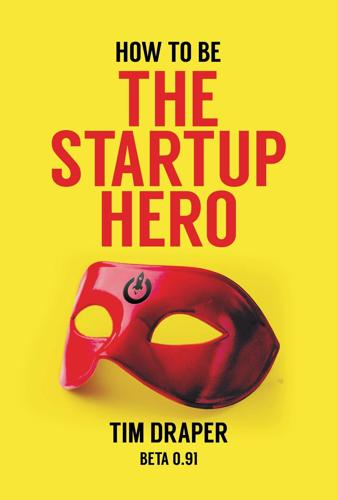
How to Be the Startup Hero: A Guide and Textbook for Entrepreneurs and Aspiring Entrepreneurs
by
Tim Draper
Published 18 Dec 2017
Brand, Network and Reputation Petrarchan Sonnet Winning your community Community is like a pack of wolves Responding to a lead dog purely loyal His reputation--acts that made him royal Their memory imprinted with symbols Connecting with a pack requires proof To prove your worth through deeds is a hard toil. Competitors bring your startup blood to boil A steady build will surely raise the roof We trust the brands we know like Skype and Tesla But some like Bell have somehow lost their lusta It's Metcalfe's Law that defines how great our network Those people in your tribe are how you'll get work. A network build requires dedication Be thoughtful as you build your reputation I will set positive examples for others to emulate. I actually think that the most efficacious way of making a difference is to lead by example, and doing random acts of kindness is setting a very good example of how to behave in the world.
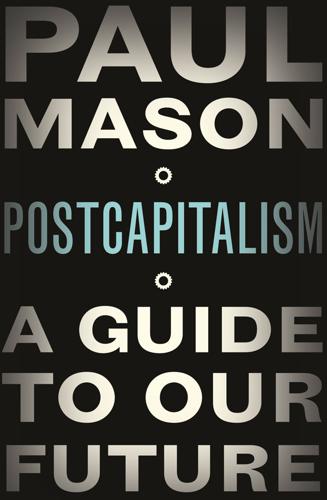
Postcapitalism: A Guide to Our Future
by
Paul Mason
Published 29 Jul 2015
Eichengreen, ‘A Requiem for Global Imbalances’, Project Syndicate, 13 January 2014 34. http://www.tradingeconomics.com/china/foreign-exchange-reserves 35. http://www.imf.org/external/np/sta/cofer/eng/ 36. L. Floridi, The Philosophy of Information (Oxford, 2011), p. 4 37. M. Foucault, The Birth of Biopolitics: Lectures at the Collège de France, 1978–79, trans. G. Burchell (New York, 2008) 38. http://www.techopedia.com/definition/29066/metcalfes-law 39. ‘Measuring the Internet Economy: A Contribution to the Research Agenda’, OECD, 2013 40. H. Braconier, G. Nicoletti and B. Westmore, ‘Policy Challenges for the Next 50 Years’, OECD, 2014 2. LONG WAVES, SHORT MEMORIES 1. N. Kondratieff, Letter, 17 November 1937, in N. Makasheva, W. Samuels and V.

Coders at Work
by
Peter Seibel
Published 22 Jun 2009
Bloch: There are multiple communities associated with Java and with other programming languages too. When there aren't, it's usually a sign that the language is either a niche language or an immature language. As a language grows and prospers, it naturally appeals to a more diverse community. And furthermore, as the amount of investment in a language grows, the value of it grows. It's like Metcalfe's law: the value of a network is proportional to the square of the number of users. The same is true of languages—you get all these people using a language and all of a sudden you've got Eclipse, you've got FindBugs, you've got Guice. Even if Java isn't the perfect language for you, there are all these incidental benefits to using it, so you form your own community that figures out how to do numeric programming in Java, or whatever kind of programming you want to do.